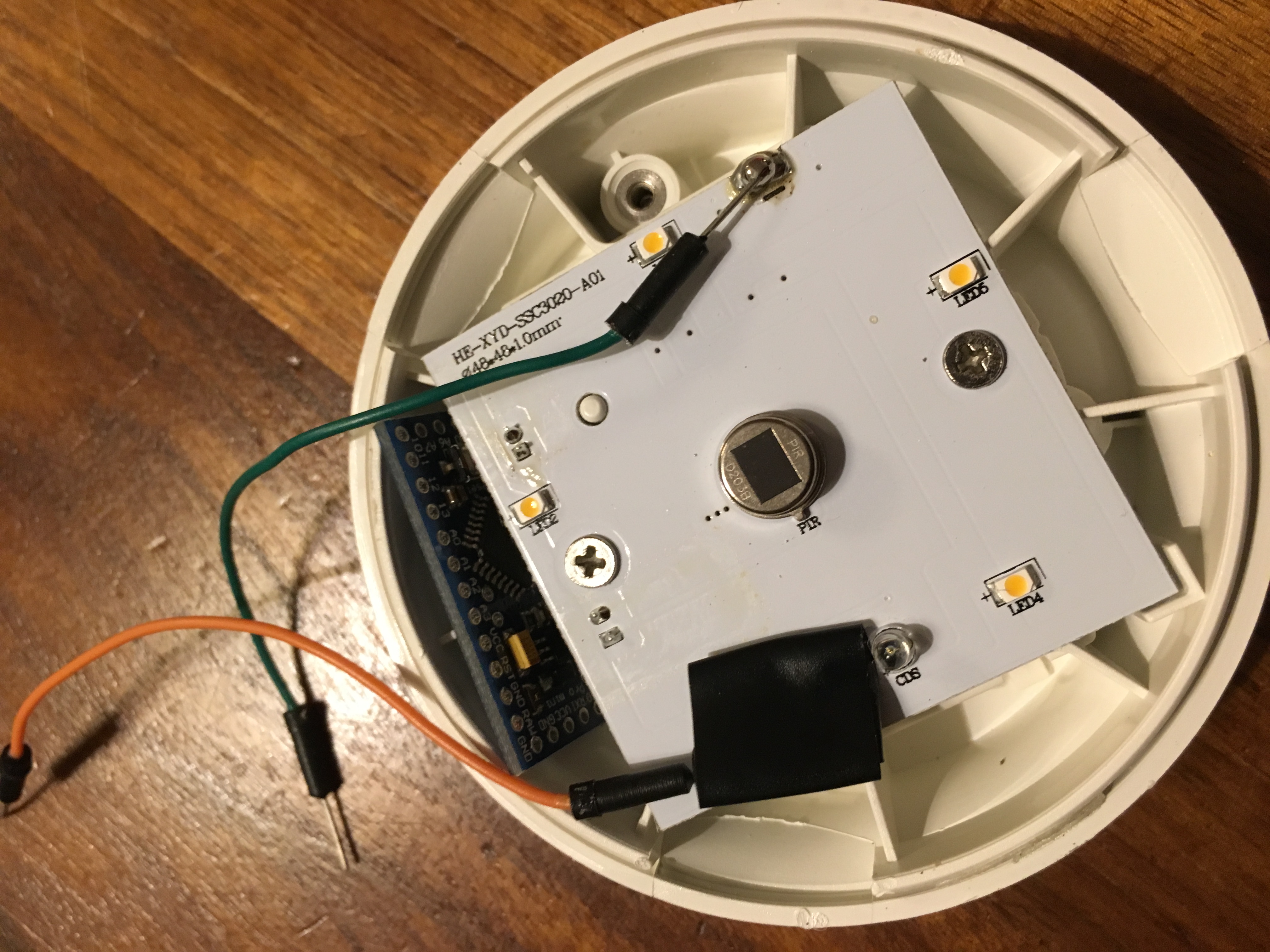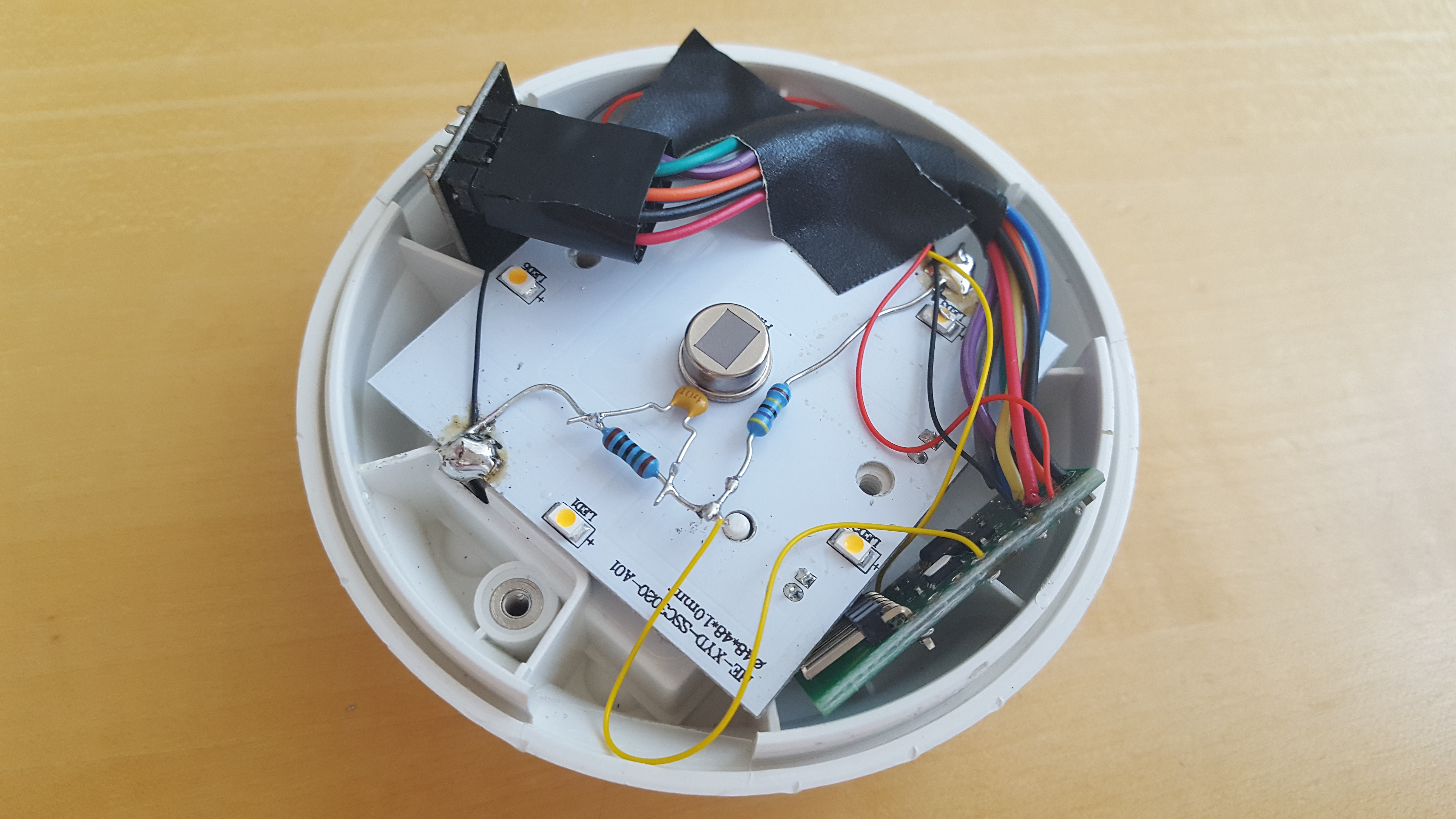Multisensor PIR based on IKEA Molgan
-
This have to be posted on http://www.ikeahackers.net/ when done also.
-
@hek Will do just nice, next to the AK47 Hemma Lamp :flushed:
-
Did someone succeed in fitting a pro mini and radio in the Molgan while still using the original pir?
It looks to me there isn't enough room for the additional components and I'm not sure what part of the pcb I can saw off while still being able to use the original pir.Does anyone have an idea?
-
Did someone succeed in fitting a pro mini and radio in the Molgan while still using the original pir?
It looks to me there isn't enough room for the additional components and I'm not sure what part of the pcb I can saw off while still being able to use the original pir.Does anyone have an idea?
-
Bought 3 pcs. to open / modify / try fitting things in it. The thing is that this housing is really perfect to place it on the ceiling or to fit things in. Better than a black box.
What I'm going to try is remove all the plastic inside including the batteryhousing but not the "click"-system to mount it.
I'm going to try to make it 230 volt compatible with a HLK-PM01 so that I can use it as a PIR, Temp and door sensor and connect it at the ceiling.Let you know how things are working out!
-
Bought 3 pcs. to open / modify / try fitting things in it. The thing is that this housing is really perfect to place it on the ceiling or to fit things in. Better than a black box.
What I'm going to try is remove all the plastic inside including the batteryhousing but not the "click"-system to mount it.
I'm going to try to make it 230 volt compatible with a HLK-PM01 so that I can use it as a PIR, Temp and door sensor and connect it at the ceiling.Let you know how things are working out!
-
@Sander-Stolk said:
door sensor and connect it at the ceiling
???
My house has its doors in the walls...@Yveaux said:
@Sander-Stolk said:
door sensor and connect it at the ceiling
???
My house has its doors in the walls...Well... connect a very small white wire in the hallway to the top of the door with a magnet.
With white ceilings you can put little cables like out of sight -
@Yveaux said:
@Sander-Stolk said:
door sensor and connect it at the ceiling
???
My house has its doors in the walls...Well... connect a very small white wire in the hallway to the top of the door with a magnet.
With white ceilings you can put little cables like out of sight -
@Sander-Stolk ah, OK. I think you can even run it all on batteries if you want
@Yveaux Yes it can BUT...
I have 0 succesfull attempts with a APM with removed regulator on 2 AA batteries. For some reason it draws power and within 3 days my batteries are dead. It's something that I will ask on the forum in a while but for now this works all the time so for it is the easy way :) -
I put a more complete write up of my mod from the previous post on my blog including the link to the sketch.
-
@tomkxy Nice write up of the "conversion". One remark to save some time... instead of removing R12 to R16 you can just remove R17 ... same result less effort.
-
-
-
@tomkxy Nice write up! Do you have an idea on the accuracy of the humidity sensor within the case?
-
@tomkxy did you really need the voltage divider? I think the sensebender does a decent job of measuring battery percentage by default.
-
@tomkxy Nice write up! Do you have an idea on the accuracy of the humidity sensor within the case?


 . I used a Sensebender which is perfect for that use case having already a ATSHA204 and temp/humid sensor on board.
. I used a Sensebender which is perfect for that use case having already a ATSHA204 and temp/humid sensor on board.